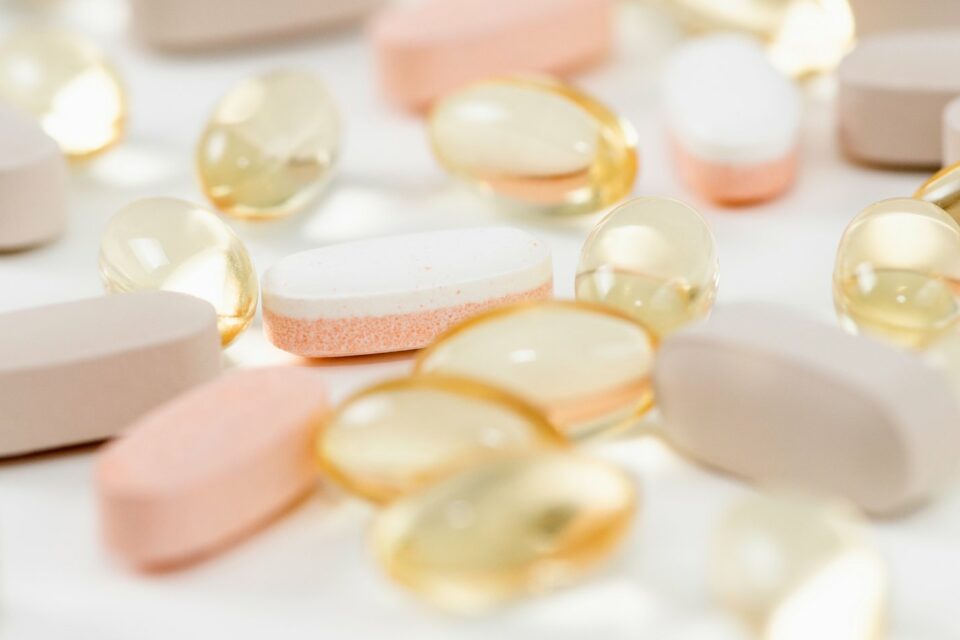How to know if supplements are natural: a breakdown of what to look for

When it comes to choosing vitamins and supplements, learning how to evaluate product labels is essential for identifying natural versus synthetic products. Some manufacturers include synthetic ingredients in their dietary supplements because they are cheaper, or they may improve the product’s stability. However, most of us would rather stick to natural supplements if given the option. So, how to know if supplements are natural? Here’s a breakdown of what to look for on vitamin and supplement labels to help you know if they’re natural or synthetic.
How to know if supplements are natural: why choose natural supplements?
There’s a lot of debate surrounding synthetic versus natural supplements. While it’s true that their molecular structures are very similar, there are also some very notable differences. The main difference is that synthetic nutrients are man-made chemical elements produced in a lab or factory, while natural nutrients come from whole food sources.
In a roundup of customized vitamins and supplements, nutrition experts at MBSF also noted that synthetic supplements usually contain fillers and artificial dyes. Some synthetic supplements even include ingredients that can be harmful to your health, such as coal tar derivatives, which is the same substance that has been linked to throat cancer in tobacco smokers. Some experts also believe that synthetic vitamins can actually put additional strain on your kidneys before they are excreted through your urine, as well.
One of the first things you’ll notice about natural supplements is that the formulas tend to be simple. They only include the nutrients you really need in reasonable amounts that your body can actually use. Natural supplements are also more easily absorbed and used by the body. Natural formulas can be found in vegan, non-GMO, and organic versions, too.

How to tell if a supplement is natural vs. synthetic
How do you tell if a supplement is natural or synthetic? Here’s what to look for.
1. Look for the prefix “dl”
Start by scanning the list of ingredients. Do you see any ingredients with the prefix “dl?” This prefix indicates a synthetic ingredient. For example, two forms of synthetic vitamin E are listed on labels as dl-alpha-tocopherol and dl-alpha-tocopherol acetate.
2. Look for words that end in “ide” or “ate”
Now, scan the label for words that end with “ide” or “ate.” Ingredients that end in these letters are synthetic ingredients added to supplements to increase stability or potency. Here are some examples: titanium dioxide, silicon dioxide, hydrochloride, chloride, sodium benzoate, sodium ascorbate, acetate, and nitrate.
3. Natural ingredients are listed as sourced from food
Natural ingredients on supplement labels will have food names. For example, vitamin K might be included as parsley and vitamin C is likely listed as citrus. On the other hand, synthetic nutrients will simply be listed as the nutrient name itself, such as “vitamin D” or “vitamin A.”
4. Look for the term “100% Natural” on the bottle
The terms “natural” and “100% Natural” don’t mean the same thing. A supplement label can say “natural” on the label if it contains as few as 10 percent natural ingredients. On the other hand, when a label says “100% Natural” it contains only natural ingredients. Labels that indicate “100% plant-based” or “100% animal-based” are also completely natural and made only from food sources.
5. Check the potency of the nutrients
Another excellent indicator of whether a product is natural or synthetic is the potency level of the nutrients. Supplements that have an extremely high level of potency are very likely to be synthetic. For example, if the label says the product contains 1,000 percent of your daily value of vitamin C, it is synthetically sourced.
6. Look for the USDA Certified Organic Seal
If a supplement label contains the USDA Certified Organic Seal, you can be confident that it is natural. Products containing this seal must have been made from at least 95 percent certified organic ingredients an only 5 percent other allowable ingredients. The product contains no synthetic dyes, artificial sweeteners, or harmful fillers. You should also know that when a label says something like “Made with organic ingredients,” it is required to contain only 70 percent certified organic ingredients and it will not be awarded the USDA certified organic seal.
7. Choose Clean Label Project Certified Supplements
The Clean Label Project evaluates products for substances that wouldn’t be listed on the label, such as toxins and contaminants from the environment or the industrial process. This certification ensures that the product is free of pesticide residue, chemicals, heavy metals, and plasticizers which can have a negative effect on your health over time.
Final Thoughts
If you are truly deficient in a certain nutrient, taking a high potency synthetic supplement for a short time may be beneficial if your doctor recommends it. But once you get your levels up, most nutrition experts will agree that you’re much better off getting your nutrition through natural, whole food supplements and eating a variety of healthy foods. Following the guidelines in this article will ensure that you’re choosing safe, natural supplements for yourself and your family.
You may also like:
- Natural products for your baby: what to consider + what you should know
- Immune-boosting foods: best ones to increase immunity
- Gout and 7 Effective Natural Treatments

